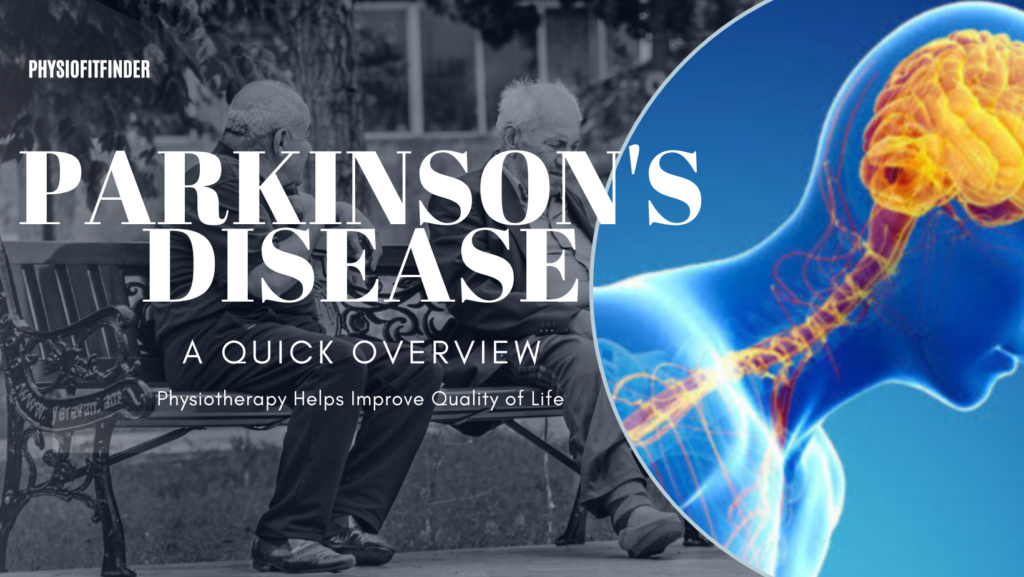Parkinson’s disease (PD) is a progressive neurological disorder that affects the body’s movement. It is recognized as an extra pyramidal disorder which is caused by the degeneration of dopamine-producing neurons in the brain. Generally disease onset is 50 years upwards. The causes of Parkinson’s disease are unknown. Genetic mutations are identified in young onset and familial cases.
Causes of Parkinson’s Disease
The exact cause of Parkinson’s disease is not yet known. But researchers believe it is caused by a combination of genetic and environmental factors. Some studies suggest that exposure to certain toxins or chemicals may increase the risk of developing PD. While some others have identified specific genetic mutations that are associated with an increased risk.
Symptoms:
Parkinson’s disease is a neuro-degenerative disorder, As the disease progresses so the features/symptoms deteriorate with time. The symptoms can vary from person to person, but typically include:
Tremors: These are usually the first symptom to appear and can occur in the hands, arms, legs, or jaw(1).
Stiffness: People with PD often experience stiffness in their arms, legs, or trunk, which can make it difficult to move.
Slowness of movement: Parkinson’s disease can make movements slower and more difficult to initiate.
Balance problems: Many people with Parkinson’s disease experience balance problems, which can increase the risk of falls.
Gait (walking pattern) becomes shuffling with small rapid steps.
Depression, dementia increases with progression of disease.
Sleep disorders occur.
Treatment
There is currently no cure for Parkinson’s disease, but there are various treatments available to help manage the symptoms. The most common treatment is medication, which can help to increase the level of dopamine in the brain and improve symptoms such as tremors and stiffness.
Other treatments may include physical therapy, occupational therapy, and speech therapy. These therapies can help to improve mobility, balance, and communication skills, which can improve quality of life for people living with PD.
In some cases, surgery may be recommended as a treatment option for Parkinson’s disease. One example is deep brain stimulation (DBS), which involves implanting electrodes into the brain to help regulate abnormal brain activity.
Role of Physiotherapy
The primary aim of physiotherapy in Parkinson’s disease is to improve functional mobility, reduce the risk of falls, and enhance quality of life.
Here are some ways physiotherapy can help in the management of Parkinson’s disease:
Improving mobility: Physiotherapy can help people with PD to maintain or improve their mobility by using exercises that target specific muscle groups. These exercises can help to reduce rigidity, improve flexibility, and increase the range of motion of joints.
Enhancing balance and coordination: Parkinson’s disease can affect balance and coordination, which can increase the risk of falls. Physiotherapy can help to improve balance and coordination through exercises that focus on improving proprioception (the sense of where the body is in space) and postural control.
Managing motor symptoms: It can cause a range of motor symptoms, including tremors, bradykinesia (slowness of movement), and rigidity. These symptoms are managed through different kind of exercises that focus on improving motor control and coordination.
Improving gait: Parkinson’s disease can cause changes in gait, including shuffling and freezing of gait. Exercises that focus on improving stride length, cadence, and balance are used to improve the gait.
Providing education and support: Physiotherapists can provide education and support to people with PD and their caregivers. This may include advice on how to manage symptoms, strategies to reduce the risk of falls, and information about community resources.
Living with Parkinson’s Disease
Living with PD can be challenging, but there are many things that can be done to improve quality of life. This may include staying active and engaged in social activities, eating a healthy diet, and getting plenty of rest.
It is also important to work closely with healthcare professionals to manage symptoms and develop a treatment plan that is tailored to individual needs. This may involve regular appointments with a neurologist, as well as working with physical therapists, occupational therapists, and other healthcare professionals.
